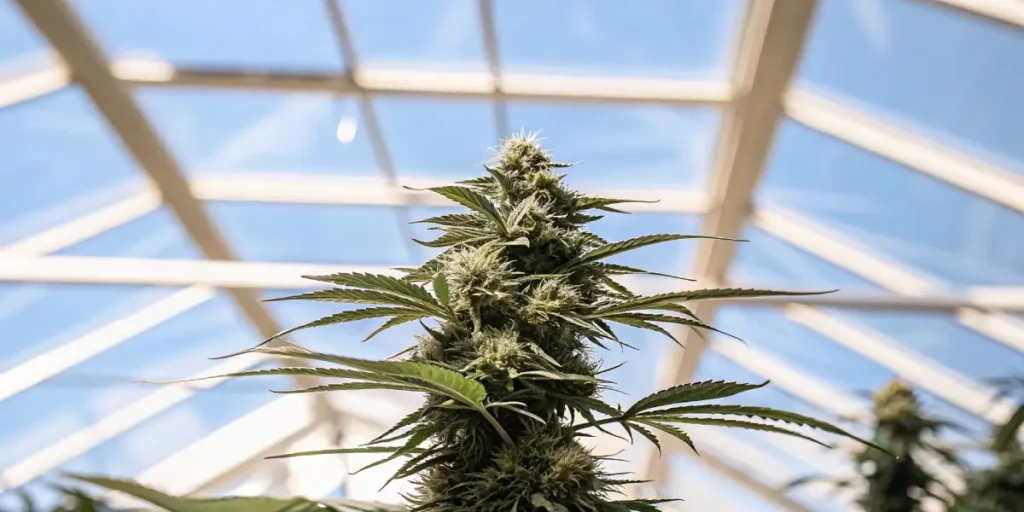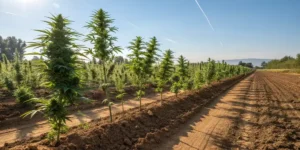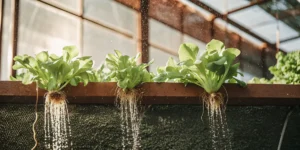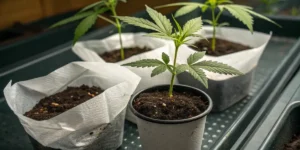Growing cannabis can be an art and a science combined. When it comes to autoflowers, things can get a bit tricky. The Autoflower VPD chart becomes an invaluable tool in this scenario. VPD, or Vapor Pressure Deficit, measures the difference between the amount of moisture in the air and how much moisture the air can hold when it is saturated. This directly affects how your autoflower plants breathe and grow.
When we talk about the optimal VPD for autoflower cannabis, it’s crucial to keep in mind that each strain has its unique needs. Yet, the VPD chart provides a guideline to ensure that your plants have the best possible environment to thrive. Consider it your growing compass. It helps you navigate through the complexities of humidity and temperature to achieve that perfect balance.
Using the Autoflower VPD chart is like having a secret weapon. It allows you to adjust the conditions in your grow room with precision. This is especially important for those growing indoors, where environmental control is key. With the right VPD, your autoflower strains can flourish, producing higher yields and better quality buds.
Implementing the Autoflower VPD chart into your growing routine can also help in diagnosing issues early. Changes in the VPD levels can be an early indicator of potential problems, allowing you to intervene before they become critical. This proactive approach can save you time and effort in the long run, making your cultivation experience more rewarding.
Moreover, understanding the VPD dynamics enables growers to make data-driven decisions. By accurately monitoring and adjusting the VPD, you can create a controlled environment that mimics the ideal natural habitat for your autoflowers. This tailored approach can lead to a more efficient use of resources, ultimately enhancing both the quality and quantity of your harvest.
How to Read an Autoflower VPD Chart
First things first, let’s break down the basics of how to read an Autoflower VPD chart. It might look complex, but it’s simpler than you think. The chart typically features temperature on the x-axis and humidity on the y-axis. Different areas on the chart will show different VPD levels.
To use the chart effectively, find the temperature and humidity levels of your grow room. Then, locate these values on the chart. The intersecting point shows your current VPD level. It’s like a GPS for your growing environment, guiding you to adjust settings for optimal growth conditions.
Reading the Autoflower VPD chart is crucial for maintaining optimal VPD for autoflower cannabis. Each point on the chart represents a unique combination of temperature and humidity that correlates to a specific VPD value. By familiarizing yourself with these values, you can quickly assess whether your growing environment is within the ideal range.
Additionally, understanding how to read the Autoflower VPD chart can help you identify patterns over time. Charting your VPD levels weekly can reveal trends that might impact plant health. This information is invaluable for making adjustments that keep your growing conditions stable, which is especially important during critical growth phases such as flowering.
Adjusting VPD for Autoflower Strains
Once you understand how to read the chart, adjusting VPD for autoflower strains becomes straightforward. You can increase humidity if your VPD is too high, or decrease it if it’s too low. Temperature adjustments work similarly. Remember, each change affects your plants, so tweak gradually.
Let’s say you’re growing the Northern Lights autoflower from Global Green Genetics. If you notice the leaves curling, check your VPD. A quick adjustment might be all it takes to get those leaves perky again. Adjusting the environment based on the VPD chart helps maintain plant health.
Adjusting VPD for autoflower strains requires a keen eye for detail. Even minor changes in environmental conditions can have significant impacts on plant health. Therefore, it’s essential to make adjustments slowly and monitor your plants’ response to ensure that they are reacting positively.
For beginners, it might be helpful to keep a journal of your adjustments and their outcomes. Over time, this record will become an invaluable resource, helping you refine your approach to VPD adjustments. This methodical approach can transform your growing process into a streamlined operation that consistently yields high-quality results.
Benefits of VPD Chart for Autoflowers
Why use the VPD chart at all? The benefits of VPD chart for autoflowers are numerous. It ensures the stomata, the tiny pores on leaves, function optimally. This means better nutrient uptake, resulting in healthier plants and bigger yields. It’s like giving your plants a health boost.
Think of it as setting the stage for growth. With optimal VPD, plants can photosynthesize more effectively. This leads to faster growth cycles and more robust buds. If you’re growing the White Widow autoflower from Global Green Genetics, you’ll notice denser buds.
The benefits of VPD chart for autoflowers extend beyond just yield and quality. By keeping your plants within the optimal VPD range, you reduce the likelihood of pests and diseases taking hold. A balanced environment is less conducive to the growth of mold and mildew, which thrive in imbalanced conditions.
Furthermore, the VPD chart for indoor autoflower growing helps you optimize resource usage. By accurately controlling temperature and humidity, you can reduce energy consumption and water usage, making your cultivation practice more sustainable and cost-effective over time.
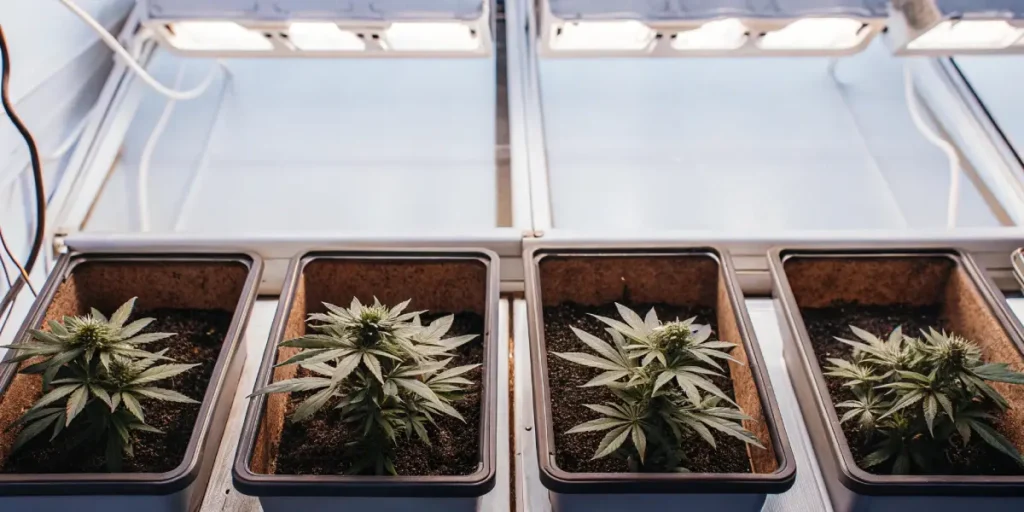
Real-Life Examples of VPD Adjustments
Imagine your grow room is too dry. The VPD chart indicates a high VPD, which can stress your plants. Adding a humidifier can bring humidity levels up, creating a more conducive environment for strains like Blueberry Autoflower, also available at Global Green Genetics.
On the flip side, if your grow room is too humid, dehumidifiers can help. Lowering humidity reduces the risk of mold, which is particularly important in dense bud strains. Adjusting VPD is like fine-tuning a car engine; each tweak can lead to smoother performance.
Real-life examples of VPD adjustments underscore the practical value of the Autoflower VPD chart. For instance, growers have reported significant improvements in plant vigor and resilience after making targeted VPD adjustments based on chart readings. This can be particularly beneficial during extreme weather conditions, where indoor growing offers a controlled refuge.
Another example involves responding to unexpected changes in climate control equipment. If a heater fails, causing a dip in temperature, the VPD chart can guide you in compensating with humidity adjustments to maintain a stable environment. Such adaptability can be crucial for safeguarding your plants against unforeseen challenges.
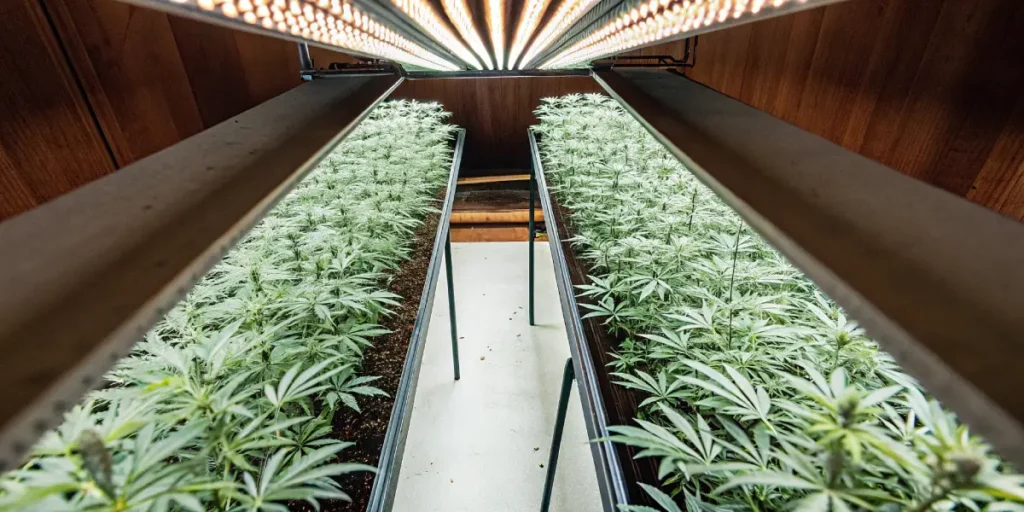
FAQs
What is the optimal VPD for autoflower cannabis?
The optimal VPD for autoflower cannabis varies by strain but generally falls between 0.8 to 1.2 kPa during the vegetative stage and 1.0 to 1.5 kPa during flowering. These ranges provide a good balance, encouraging healthy growth and bud development. Remember, the VPD is just one piece of the puzzle. Monitor your plants regularly for the best results.
Using the Autoflower VPD chart, you can tailor the environment to suit your specific strain. For example, if you’re growing Gorilla Glue 4 Autoflower from Global Green Genetics adjusting VPD can help you achieve those sticky, resinous buds you’re aiming for.
Knowing the optimal VPD for autoflower cannabis is essential for maximizing plant health and productivity. While the general ranges provide a reliable guideline, individual strains may have specific preferences. It’s beneficial to research the particular needs of your strain to fine-tune your growing environment.
By leveraging the Autoflower VPD chart, you can experiment with slight variations in VPD to observe how your plants respond. This approach allows for a more personalized growing experience, where you can discover the precise conditions that lead to the best results for your unique setup.
How does VPD affect plant growth?
VPD affects plant growth by influencing transpiration rates. High VPD can cause plants to lose water more rapidly, leading to stress. Conversely, low VPD can reduce transpiration, affecting nutrient uptake. By maintaining optimal VPD, plants can grow vigorously, with better nutrient absorption and less stress.
Consider it like a thermostat for plant health. Adjusting VPD based on your Autoflower VPD chart ensures your plants use resources efficiently. This can lead to healthier, more productive plants, offering better yields and quality.
In understanding how VPD affects plant growth, it’s important to recognize the dynamic nature of plant responses. Fluctuations in VPD can trigger adaptive responses in plants, such as changes in leaf morphology or root development. Therefore, maintaining a consistent VPD is crucial for stable growth patterns.
Moreover, VPD plays a role in the plant’s ability to uptake CO2, which is essential for photosynthesis. By optimizing VPD, you ensure that your plants have the best possible conditions for converting light into energy, driving growth and productivity throughout the cultivation cycle.
Why is VPD important for indoor autoflower growing?
Indoor growing requires precise environmental control, and VPD is crucial for this. The VPD chart for indoor autoflower growing helps you maintain the right balance of temperature and humidity. This balance is vital for plant processes like photosynthesis and respiration.
In a controlled indoor setup, using the VPD chart is like having a climate manager at your fingertips. You can create the ideal conditions for your autoflowers, leading to better growth and higher yields.
The importance of VPD in indoor autoflower growing cannot be overstated. In the absence of natural environmental cues, the Autoflower VPD chart acts as a guide to replicate optimal growing conditions. This level of control can be a game-changer, allowing growers to produce consistent, high-quality yields regardless of external weather conditions.
Furthermore, the precision offered by VPD management minimizes the risk of common indoor growing issues, such as pests and diseases that thrive in less-than-ideal conditions. By maintaining VPD within optimal ranges, you enhance the resilience of your plants, allowing them to better withstand any potential challenges.
How can I quickly adjust VPD for my autoflowers?
Quick adjustments to VPD can be achieved by modifying either temperature or humidity. If your VPD is too high, increase humidity or lower temperature. If it’s too low, decrease humidity or raise temperature. Equipment like humidifiers, dehumidifiers, heaters, and fans can be very helpful.
For instance, if you’re cultivating an Amnesia Haze Autoflower and notice stunted growth, a quick VPD check might reveal the need for adjustments. Implementing these changes promptly can improve plant health significantly.
To quickly adjust VPD for your autoflowers, it is beneficial to have a strategic plan in place. This includes having the necessary equipment ready and regularly monitoring environmental changes. Quick, informed decisions can prevent minor VPD fluctuations from becoming major issues.
Additionally, automated systems can be integrated to maintain optimal VPD levels. Sensors and controllers that adjust temperature and humidity automatically ensure a stable growing environment, freeing you from constant manual adjustments and allowing you to focus on other aspects of cultivation.
Can the VPD chart be used for outdoor growing?
While the VPD chart is primarily designed for controlled environments, it can still offer insights for outdoor growing. Outdoor growers can use it to understand ideal conditions and adapt their practices accordingly. However, environmental control is less precise outdoors.
For outdoor setups, focusing on other variables like soil quality and pest control may be more practical. Yet, knowing the principles of VPD can help outdoor growers make informed decisions about when to water or provide shade.
In outdoor growing, the Autoflower VPD chart can guide you in choosing the best times for planting and harvesting. By tracking natural weather patterns and comparing them to VPD values, you can better predict how your plants will perform throughout different seasons.
Although outdoor environments lack the precision control of indoor setups, understanding VPD can still enhance your growing strategy. For example, choosing the right location with natural windbreaks or shade can help maintain a more stable VPD, reducing stress on your plants and leading to better overall growth.

